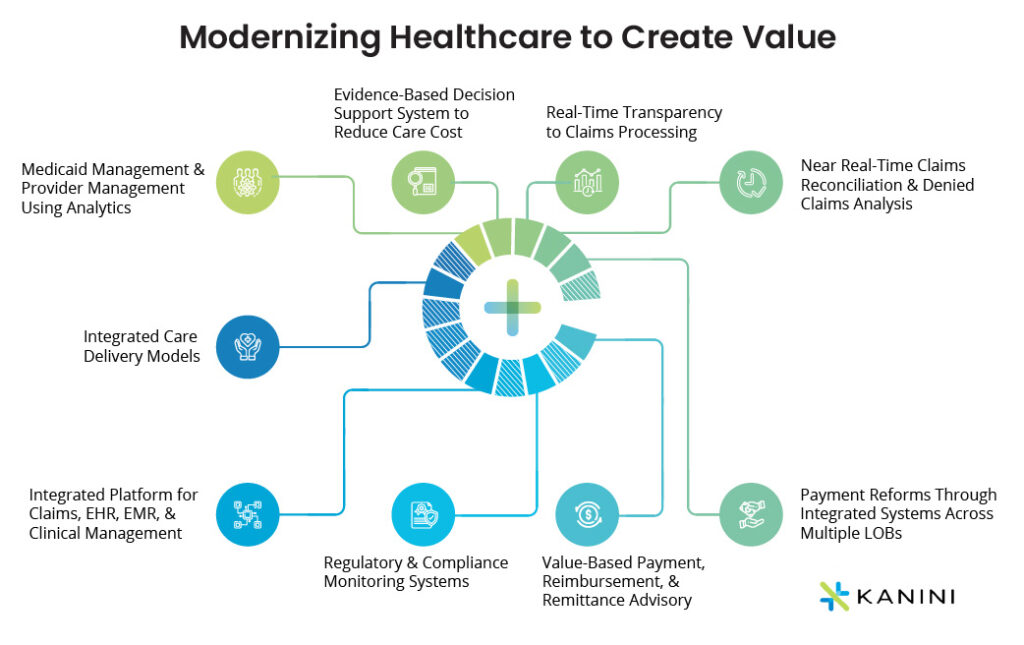The healthcare industry has realized that it’s time to bring in a radical change in the fundamental system of care delivery—move away from Fee-For-Service (FFS) and adapt to deliver patient-centric care. On that ground, the concept of Value-based Care (VBC) has emerged and become one of the most discussed topics in the healthcare market presently. Improved health outcome is the focus of this model contrary to the FFS approach of rewarding the volume of services. Value-based care solutions powered by advanced technologies bring down medical costs significantly, especially at a time when healthcare expenditures are soaring worldwide.
The global value-based care payment market is expected to reach USD3.40 billion in 2026 at a compound annual growth rate (CAGR) of 11.5%.
– Value-based Care Payment Global Market Report 2022
There has been a steady progression towards value-based care, particularly since the COVID-19 pandemic. In the US, government interventions like the Medicare Advantage, Bundled Payment Models, and Accountable Care Organizations (ACOs) among others have been fast-tracking the advancement, taking VBC to the masses. However, one can also say that although the road to VBC has been discovered and its benefits are being actively acknowledged, it is yet to be fully explored.
“The transition from fee-for-service to pay-for-value has been referred to as one of the greatest financial challenges faced by the US healthcare system”
– HIMMS
As healthcare transforms into a digitally forward industry to shape VBC into a sustainable model of care delivery, the focus is on addressing some of the biggest challenges faced by the healthcare industry. Health inequity, lack of interoperability, workforce shortages and hospital shutdowns, inadequate quality healthcare for the rural population, medical education system lacking focus on value-based care, and rising claims denials—are just some of the numerous roadblocks in the US health system that are making the adoption of value-based care an urgent necessity.
- Absence of interoperability has been one of the main reasons for healthcare organizations running into revenue losses. These enterprises face the risk of reputational damage as they fail to satisfy quality measures like Healthcare Effectiveness Data and Information Set (HEDIS®) and CMS Star Ratings of a VBC model.
- Medical claims denials have risen to 11% across the US since the onset of COVID-19 according to the Change Healthcare 2020 Revenue Cycle Denials Index. CMS data reveals that 30% of claims are either denied, lost, or ignored.
- Rising medical expenditures along with- instances of billing negligence are increasing medical debt, which has become a growing economic concern. CFPB’s Complaint Bulletin found that approximately 15% of the 750,000 debt collection complaints were about attempts to collect a medical debt that was already paid, or did not belong to the complainant, or the bill amount was incorrect.
- More than 400,000 healthcare workers have made an exit from care delivery since the pandemic, according to the US Bureau of Labor Statistics.
Amidst such growing concerns in the healthcare system which are also impacting the US economy, embracing a care delivery model like VBC that creates value for every stakeholder in the healthcare delivery chain has been evaluated as a worthy solution in the long run.
Discover how technology can help ensure a smooth transition to VBC. Give us a call!
The 3 Cs of Value-based Care Delivery — Care Quality, Cost Control, Consumer Engagement, and More

Author









